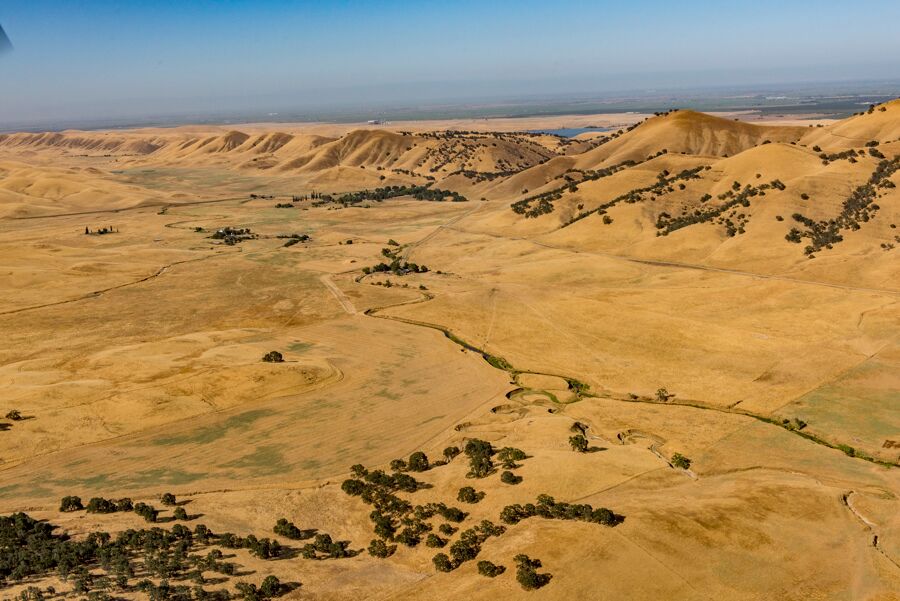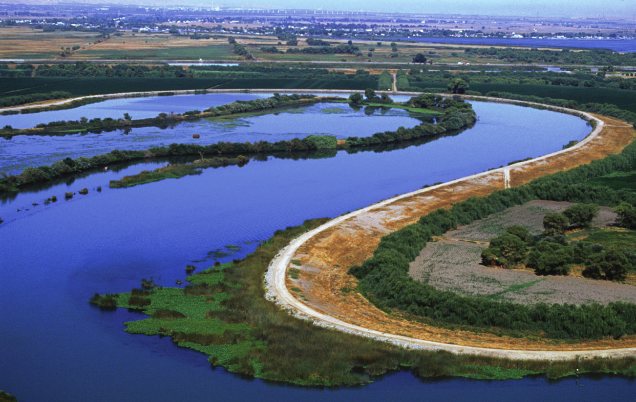
Sites Reservoir location. (Photo: norcalwater.org/2022/02/16/sites-reservoir-a-part-of-the-solution-for-dry-years/)
Judge Denies Enviro Lawsuit to Stop Sites Reservoir Project
‘Judges don’t weigh the correctness of an environmental report’s conclusions, only its sufficiency’
By Katy Grimes, June 4, 2024 6:20 pm
Judge Samuel T. McAdam of the Yolo County Superior Court denied an environmental lawsuit to halt the Sites Reservoir project, addressing the streamlined legal process that led to the quick ruling, Courthouse News reported Tuesday afternoon.
The petitioners were Friends of the River, Center for Biological Diversity, California Sportfishing Protection Alliance, California Water Impact Network, Save California Salmon, and Sierra Club.
Fish or People?
Conservation groups sued over the proposed reservoir arguing that it would threaten fish and increase greenhouse gas pollution, Courthouse News reported. They said the reservoir would divert water from the Sacramento River system, which has salmon and steelhead fish.
“The groups had argued that the Yolo County Superior Court judge in the case should determine the certification of the final impact report and project approval were invalid, as they didn’t meet the requirements of the California Environmental Quality Act, or CEQA.”
The judge disagreed.
From the decision:
The Merits of the Claims.
Petitioners make four arguments in their opening brief:
1. The EIR relies on an inaccurate environmental baseline.
2. The EIR failed to consider a reasonable range of alternatives.
3. The EIR fails to provide an accurate description of the environmental setting of the
Project area.
4. The EIR relies upon an inaccurate project description.
Respondents argue that petitioners have failed to establish any basis for granting the requested writ.
A. Issue#1:TheEIRreliesonaninaccuratebaseline.
Petitioners argue that the EIR improperly uses an environmental baseline that differed from the conditions that existed when the NOP was issued, and from when the RDEIR was released. (Petitioners’ Opening Brief (“OB”), p. 23.) Specifically, petitioners contend that the EIR’s baseline is deficient because it:
( 1) relies on a pair of 2019 biological opinions (“2019 Biological Opinions”) issued by the National Marine Fisheries Services (“NMFS”) and the U.S. Fish and Wildlife Service (“FWS”) pursuant to the Endangered Species Act (16 U.S.C, § 1531 et seq) for the coordinated long-term operations of the Central Valley Project (“CVP”) and State Water Project (“SWP”) that have been withdrawn; and
(2)
(3) omits the State Water Resources Control Board’s (“SWRCB”) 2018 update of the Bay-
Delta Water Quality Control Plan (“Bay-Delta Plan”). (OB, pp. 25-28.)
Respondents contend that substantial evidence supports the Authority’s decision to use an existing conditions model that incorporated the 2019 Biological Opinions and also supports the Authority’s treatment of the Bay-Delta Plan. (Opposition Brief (“Opposition”), pp. 19-25.)
The Environmental Impact Report began in 2017. It is 2024.
Notably, from the lawsuit decision:
Absolute perfection is not required; what is required is the production of information sufficient to permit a reasonable choice of alternatives so far as environmental aspects are concerned. It is only required that the officials and agencies make an objective, good-faith effort to comply. That requires a ‘hard look’ at environmental consequences in recognition of the factors described in sections 21000 and 21001; the court does not seek to impose unreasonable extremes or to interject itself within the area of discretion as to the choice of the action to be taken. (Mount Sutro Defense Committee v. Regents of University of California, supra, 77 Cal.App.3d at p. 37; San Francisco Ecology Center v. City and County of San Francisco, supra, 48 Cal.App.3d at p. 594; Natural Resources Defense Council, Inc. v. Morton, supra, 458 F.2d at pp. 834-838; Natural Resources Defense Council v. Callaway, supra, 524 F.2d at p. 93.)
Thus, this Court finds that the EIR’s alternatives analysis sufficiently informed decision makers and the public about the different options available for feasibly building and operating the Project.
Wrapping up the decision:
“Here, the Court finds that none of petitioners’ contentions demonstrate that the Project description’s lack of specificity of the new roadways, recreation areas, transmission lines, and upgrades to the GCID canal was insufficient to understand the environmental impacts of the proposed Project. To the contrary, the voluminous Project description contains tremendousdetail about these elements of the Project. For example, the Project description includes detailed conceptual maps, schematic sketches, and aerial photographs that show the area in which the roads, recreational areas, transmission lines will be located.”
Citing case law when denying this argument, the judge wrote that judges don’t weigh the correctness of an environmental report’s conclusions, only its sufficiency, Courthouse News said. Finally, McAdam found that “the ‘technical, economic, and environmental characteristics’ of the project are described, articulated, and illustrated” in compliance with the proper guidelines.
Remember, Since year 2000, California voters have approved eight water bonds totaling more than $30 billion. It’s about time a new reservoir gets built – the Sites Reservoir was first conceived in the 1950s – it’s taken 74 years to get the Sites Reservoir to the building stage, as the Globe just reported.

- Byrna Files Lawsuit Against CA for Blocking Ammunition Sales of Less-Lethal Weapons - December 8, 2025
- Hypocrite Alert: Gov. Newsom Blames Trump For Abandoning LA Fire Survivors - December 5, 2025
- Gov Newsom ‘Bends the Knee’ to Trump After Maligning President at NYT Event - December 4, 2025





EXCELLENT NEWS.
Good grief, the conservation groups sued over the proposed reservoir arguing that it would threaten fish and increase greenhouse gas pollution when over 50% of the water from runoff in the state goes to support fish and goes straight out into the Pacific Ocean?
So what has happened with the funding from those eight water bonds totaling more than $30 billion that voters have approved since 2000? Has Newsom and the criminal Democrat mafia that controls the legislature misappropriated it?
As for those petitioners (Friends of the River, Center for Biological Diversity, California Sportfishing Protection Alliance, California Water Impact Network, Save California Salmon, and Sierra Club), how many of them are receiving funding from nefarious sources to stop the Sites Reservoir project and similar projects? The Sierra Club has a questionable funding past? (https://www.influencewatch.org/non-profit/sierra-club/)
Climate Fetish — For over 50 years local, state, federal and international environmental regulatory policies have embedded cost increases in all of our goods, services, foods, energies and activities; resulting, in growing instances, in climate austerity. Accordingly, there should be a pause to reset government environmental regulations, and to re-alignment of the Scientific Method with environmental and economic policies.
There was a lot of hoopla about a state audit. Then they did it, I guess. Now crickets.